Gas type of welding is the process of using heat generated from burning a fuel gas (like acetylene) to cut and/or join metals together by using the right filler welding rod. Gas welding is one of the most important types of welding because of its scope of application. It is one of the oldest forms of heat-based welding and remains the go-to option for many industries. The reason why this welding technique is still very popular is because of its ease of use and low-cost nature. Carrying out a welding process with gas welding is relatively easy and does not necessarily require expert welders. When a fuel such as acetylene is used, the flame can reach temperatures of just over 5,700°F (3200°C). This temperature is lower than what we get from an arc welding machine, but the advantages previously mentioned outweigh this drawback for various types of repair and construction work. When metals are welded using gas welding equipment, fuel gases are mixed with oxygen to produce a concentrated flame at a high temperature. This flame directly strikes a weld area and melts the materials in question (often, but not always, with the addition of filler material). The melted section of each piece of metal forms something called a melt or weld pool where the liquid metals diffuse into one another and, once cooled, form a strong joint. This form of welding can be used for many common types of metals. 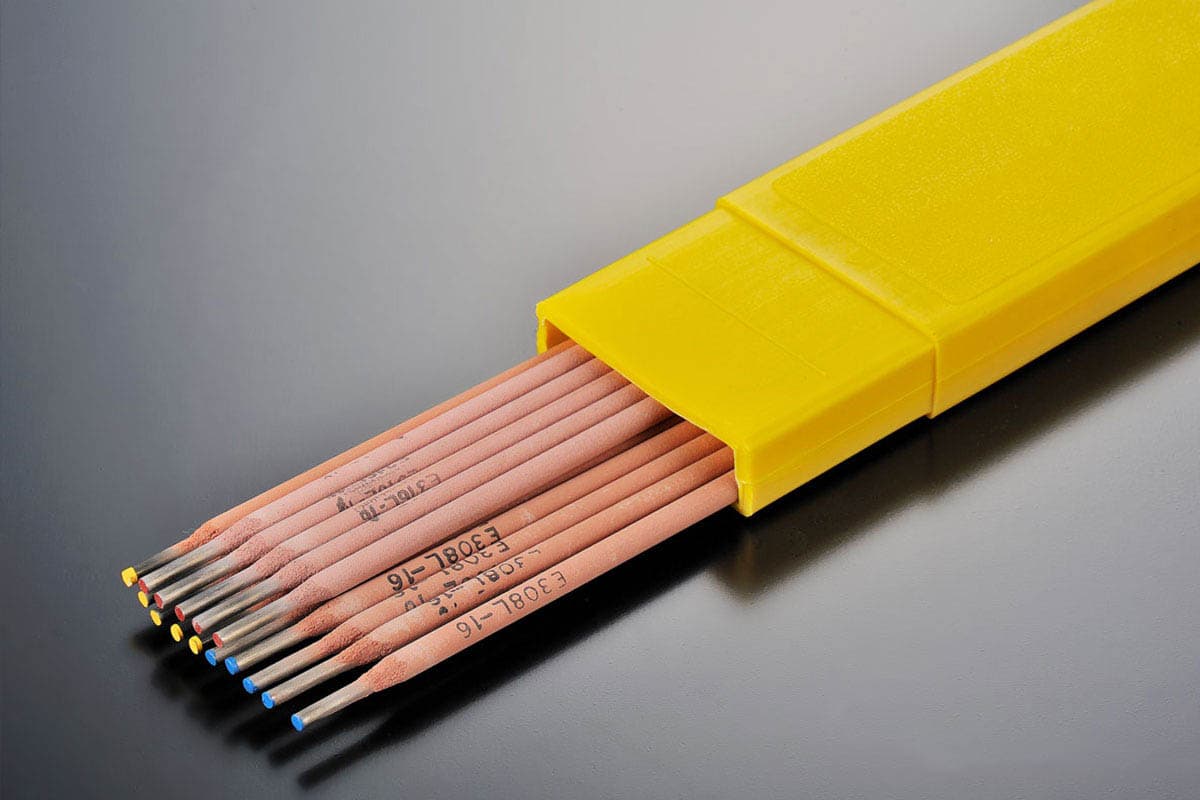 Completion of weld requires the welder to slowly remove the flame from the joint, giving it time to harden without oxidation. Most commonly, oxygen is mixed with gases like acetylene, hydrogen, propylene, butane, and others. The choice of gas used for welding depends on the type of project, cost, and flame control. The most commonly used gas welding fuel gas is acetylene. This is so popular, in fact, that it is not uncommon to replace the term gas welding with oxy-acetylene welding, depending on the fuel that is used. It has some very distinct advantages over its competitors. These include, but are not limited to: It can be used to join many different types of metal: - Gas welding can be used to weld ferrous and non-ferrous metals together. This is one of its greatest strengths compared to other welding processes. It does not require the use of electricity: - When we compare gas welding to the other popular weld methods like arc welding, and gas welding, gas welding does not require any electricity to operate. Hence, you can use gas welding in places that do not have access to electricity. Cheap Equipment costs: The initial required capital for gas welding is very low when compared to other forms of welding. For some applications, this is very beneficial.
Completion of weld requires the welder to slowly remove the flame from the joint, giving it time to harden without oxidation. Most commonly, oxygen is mixed with gases like acetylene, hydrogen, propylene, butane, and others. The choice of gas used for welding depends on the type of project, cost, and flame control. The most commonly used gas welding fuel gas is acetylene. This is so popular, in fact, that it is not uncommon to replace the term gas welding with oxy-acetylene welding, depending on the fuel that is used. It has some very distinct advantages over its competitors. These include, but are not limited to: It can be used to join many different types of metal: - Gas welding can be used to weld ferrous and non-ferrous metals together. This is one of its greatest strengths compared to other welding processes. It does not require the use of electricity: - When we compare gas welding to the other popular weld methods like arc welding, and gas welding, gas welding does not require any electricity to operate. Hence, you can use gas welding in places that do not have access to electricity. Cheap Equipment costs: The initial required capital for gas welding is very low when compared to other forms of welding. For some applications, this is very beneficial.  Doesn’t require specialized labor: Gas welding doesn’t require highly specialized labor. This makes it easier to find gas welders, as well as keeps the labor charge low. Gas welding gear is very portable: The whole setup for gas welding is relatively easy to pick up and move around, unlike some other forms of welding. Gas welding is used in a variety of industries. Here are some of the most common ones:
Doesn’t require specialized labor: Gas welding doesn’t require highly specialized labor. This makes it easier to find gas welders, as well as keeps the labor charge low. Gas welding gear is very portable: The whole setup for gas welding is relatively easy to pick up and move around, unlike some other forms of welding. Gas welding is used in a variety of industries. Here are some of the most common ones:
- Repair works: One of the most common applications of gas welding is for repair works.
- Sheet metal production: Thin to medium sheet metal can be gas-welded without problems.
- Aircraft industry: Oxy-acetylene welding is widely used to join various aircraft parts.
- Automotive industry: used for welding frame and chassis parts.
- Joining High Carbon Steel: Gas welding is very effective at melting high carbon steel.
As we have seen, gas welding is one of the most important and widely used welding processes. The combination of relatively low cost, ease of use, and portability make gas welding one of the most popular welding methods we use today. Acetylene is the only combustible gas suitable for gas welding due to its favorable flame properties at both high temperatures and high diffusion rates. Other combustible gases such as propane, propylene, or natural gas do not produce enough heat for welding but are used for cutting, soldering, and brazing. 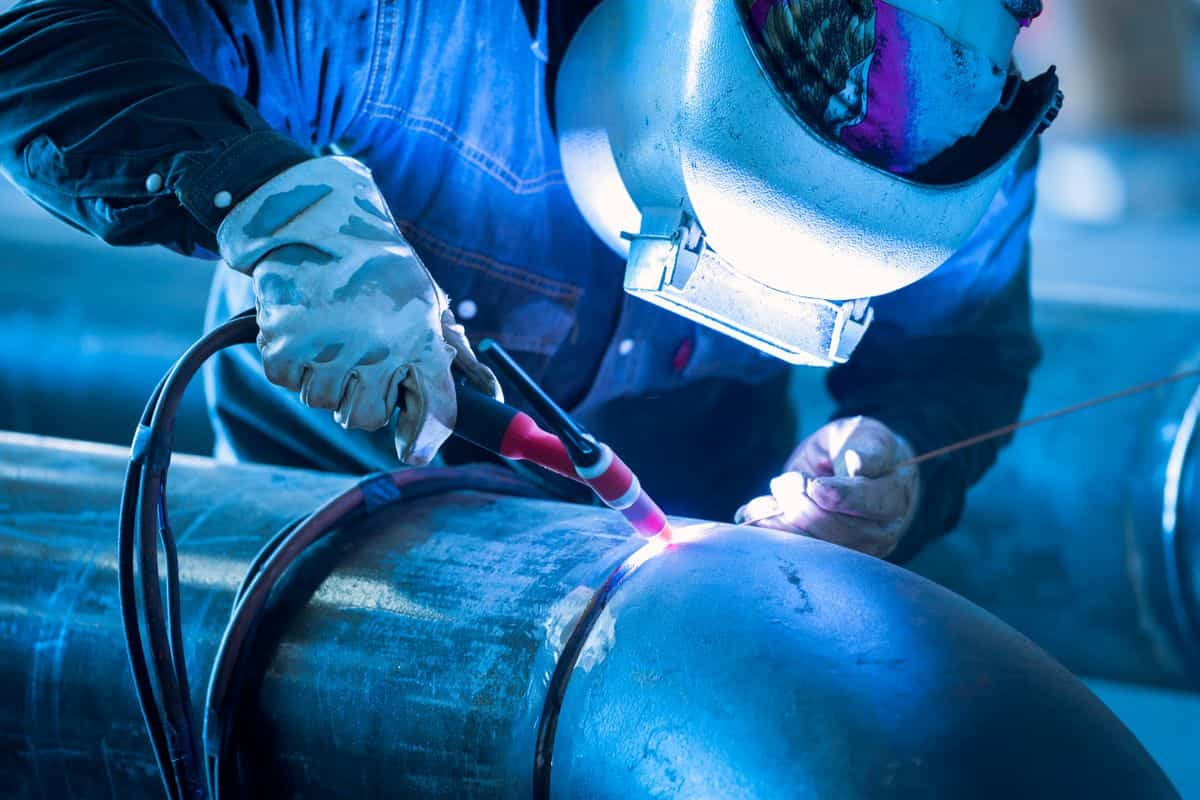 Tungsten inert gas welding (TIG) is an arc welding process that uses a non-consumable tungsten electrode surrounded by a protective atmosphere of an inert gas such as argon or helium. Many welders use E7018 electrodes for welding thick metals such as mild steel in gas welding. The E7018 electrodes provide strong welds with high impact characteristics (even in cold weather) and can be used for base metal welding of carbon, high carbon, low alloy, or high tensile steel. In addition, the 6013 is best suited for gas welding thin or sheet metal parts with light to moderate penetration. 6013 electrodes are widely used in the production of truck body frames, metal furniture, storage tanks, agricultural facilities, or where aesthetics are of great importance. In gas welding, electrodes E 6010 can be used on painted, galvanized, and dirty surfaces, and E 7018 on clean or new sheet metal. E6010 is used for deep penetration welding and E 7018 is used for welding metals prone to breakage to produce high-quality welds with excellent toughness and high ductility. With gas welding, the main difference is that E7018 is a serious rod used in building codes. The E6013 is considered to be a versatile cultivator bar that is easy to use. E6013 is not used on any serious construction site.
Tungsten inert gas welding (TIG) is an arc welding process that uses a non-consumable tungsten electrode surrounded by a protective atmosphere of an inert gas such as argon or helium. Many welders use E7018 electrodes for welding thick metals such as mild steel in gas welding. The E7018 electrodes provide strong welds with high impact characteristics (even in cold weather) and can be used for base metal welding of carbon, high carbon, low alloy, or high tensile steel. In addition, the 6013 is best suited for gas welding thin or sheet metal parts with light to moderate penetration. 6013 electrodes are widely used in the production of truck body frames, metal furniture, storage tanks, agricultural facilities, or where aesthetics are of great importance. In gas welding, electrodes E 6010 can be used on painted, galvanized, and dirty surfaces, and E 7018 on clean or new sheet metal. E6010 is used for deep penetration welding and E 7018 is used for welding metals prone to breakage to produce high-quality welds with excellent toughness and high ductility. With gas welding, the main difference is that E7018 is a serious rod used in building codes. The E6013 is considered to be a versatile cultivator bar that is easy to use. E6013 is not used on any serious construction site. 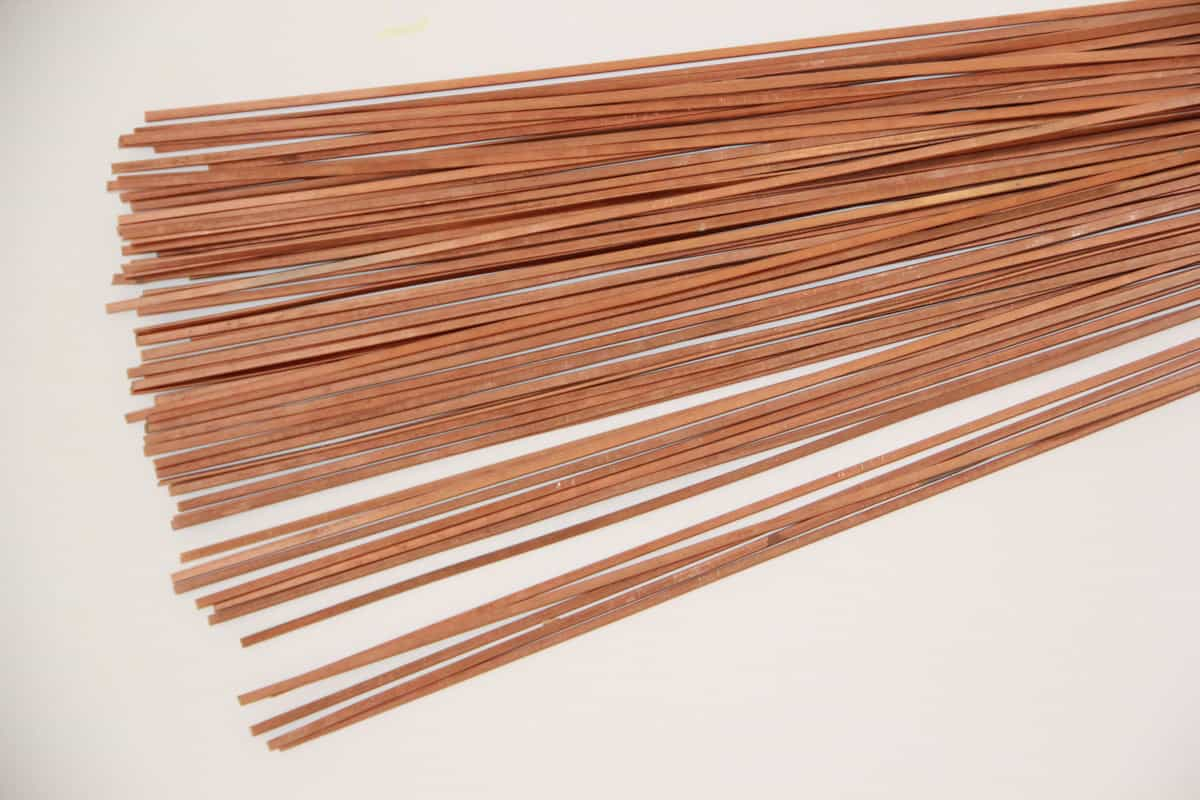
Gas welding
Several welding processes are used to melt and join various metals and materials like the gas type of welding. The type of project being worked on, as well as the type of material being added, will determine which process will be used. Gas welding is one of the oldest types of heat welding and is used in many industries. There are also welds that use shielding gas to protect the weld from contamination, such as B. metal arc welding (GMAW) and gas shielded tungsten arc welding (GTAW). Gas welding is one of the oldest types of heat welding. It joins by heating the ends of the material, which allows the metals to melt and fuse. There are many gases that burn at extremely high temperatures, making this possible. The base material is melted by a filler rod using a flame of a mixture of oxygen and fuel passing through a welding torch. Fuel and oxygen are stored in pressurized steel cylinders, and the gas is supplied through flexible hoses controlled by welders. Types of gas welding There are several gas welding methods, but the most commonly used are known as oxy-acetylene welding or oxyfuel welding. Gas welding allows the melting of non-ferrous metals (iron-free) and ferrous metals, and no current is required to initiate the welding. Oxy-acetylene welding uses a combination of oxygen and a combustible gas (usually acetylene) and is mainly used for welding thin metal profiles. Oxy-fuel welding uses a mixture of oxygen and gasoline. This method can be more effective than acetylene in gas-cutting steel sheets. 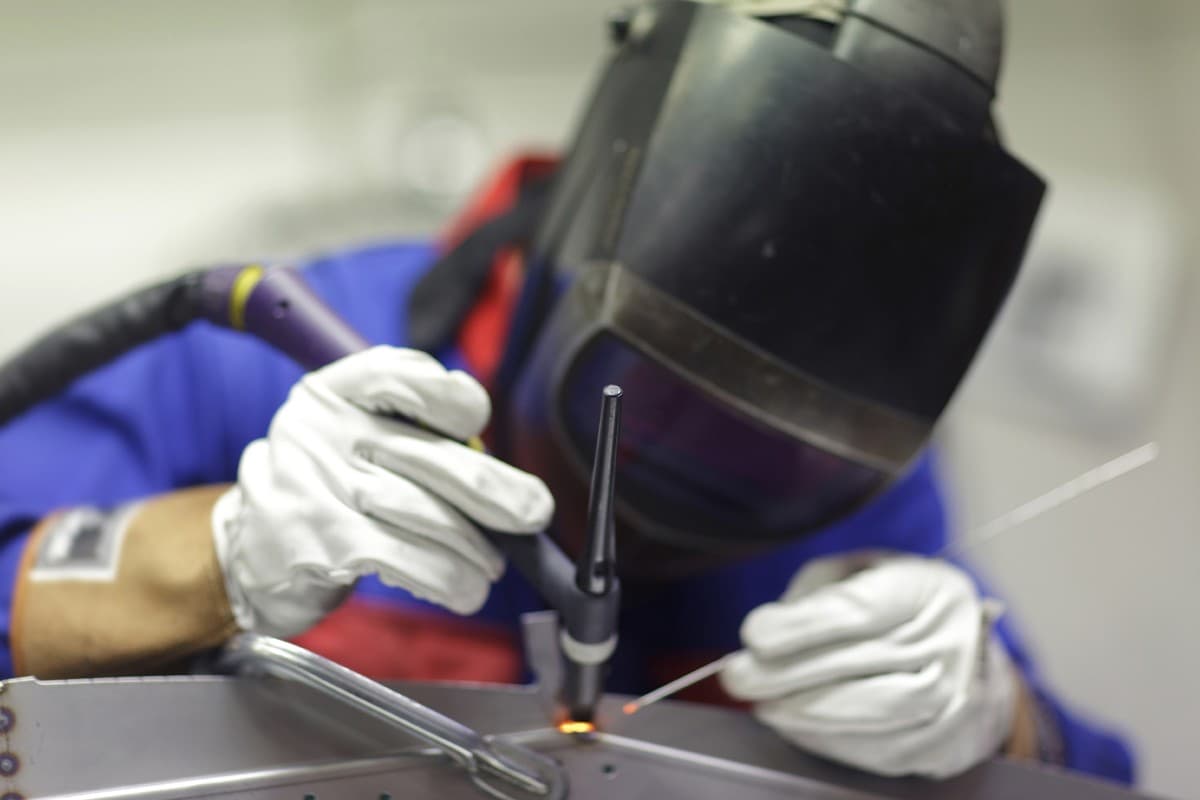 Gas welder Gas welding is similar to other welding processes in terms of the type of equipment used. A welding torch with a mixing chamber is used, which uses a combination of fuel and oxygen. Control valves are provided for each gas used to allow the welder to control the amount of gas coming out of the cylinder. Both fuel and oxygen cylinders are available. GMAW and GTAW WELDING As mentioned earlier, there are some types of shielded gas welding that are taught at UTI as part of the Welding Technology program. Students will learn the processes and equipment used to perform this type of arc welding: Metal gas arc welding (GMAW). Also known as metal inert gas welding (MIG), GMAW works when an arc forms between the work piece and the wire electrode. It uses constant voltage devices to generate heat from a DC arc. Welding is carried out in an inert shielding gas environment to prevent current contamination by electrodes passed through the torch. Gas tungsten arc welding (GTAW): Also known as tungsten inert gas welding (TIG), GTAW uses DC equipment to generate heat. The GTAW process uses a high melting point tungsten electrode to energize the welding arc and melt the metal. It is accompanied by an inert shielding gas that prevents contamination.
Gas welder Gas welding is similar to other welding processes in terms of the type of equipment used. A welding torch with a mixing chamber is used, which uses a combination of fuel and oxygen. Control valves are provided for each gas used to allow the welder to control the amount of gas coming out of the cylinder. Both fuel and oxygen cylinders are available. GMAW and GTAW WELDING As mentioned earlier, there are some types of shielded gas welding that are taught at UTI as part of the Welding Technology program. Students will learn the processes and equipment used to perform this type of arc welding: Metal gas arc welding (GMAW). Also known as metal inert gas welding (MIG), GMAW works when an arc forms between the work piece and the wire electrode. It uses constant voltage devices to generate heat from a DC arc. Welding is carried out in an inert shielding gas environment to prevent current contamination by electrodes passed through the torch. Gas tungsten arc welding (GTAW): Also known as tungsten inert gas welding (TIG), GTAW uses DC equipment to generate heat. The GTAW process uses a high melting point tungsten electrode to energize the welding arc and melt the metal. It is accompanied by an inert shielding gas that prevents contamination. 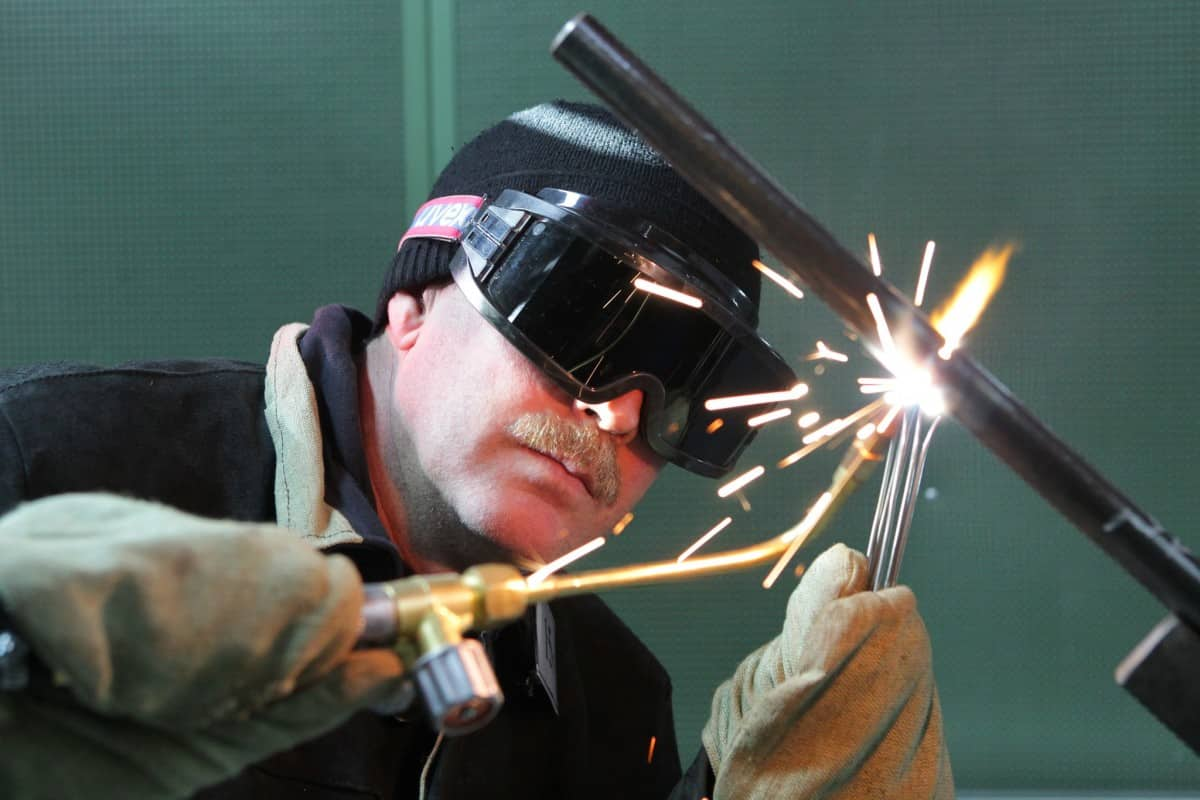 Shielding gases for arc welding Shielding gases are important when performing GMAW and TIG welding. The purpose of using a shielding gas in this type of welding is to protect the part being welded from oxidation and contamination. The gases used in these processes are either inert or active. The inert gases are chemically inactive and suitable for all TIG and non-ferrous welds in the MSG process. The most commonly used inert gases are argon and helium. Active shielding gases are mixtures of carbon dioxide, argon, and oxygen that react in the weld pool and melting wire. Argon is excellent for protecting deep groove flat welds and is often used alone with aluminum and non-ferrous metals or alloys. Pure argon is the most commonly used shielding gas for GMAW and GTAW welding. Helium is often used for machining but is not as effective for manual welding. It is considered an excellent gas for the protection of magnesium, copper, and aluminum welds. It is generally only used for more specialized GTAW applications. Sometimes a combination of argon and helium is used in GMAW and GTAW welding. Gas welding vs arc welding There are several differences between the gas welding and arc welding processes, although the use of gas exists in the GMAW and GTAW processes discussed above. The main difference between the two methods is how the heat is generated. Arc welding uses electricity to generate the heat needed to melt metals, while gas welding uses flammable gases. If there is no access to electricity, gas welding is a more acceptable option.
Shielding gases for arc welding Shielding gases are important when performing GMAW and TIG welding. The purpose of using a shielding gas in this type of welding is to protect the part being welded from oxidation and contamination. The gases used in these processes are either inert or active. The inert gases are chemically inactive and suitable for all TIG and non-ferrous welds in the MSG process. The most commonly used inert gases are argon and helium. Active shielding gases are mixtures of carbon dioxide, argon, and oxygen that react in the weld pool and melting wire. Argon is excellent for protecting deep groove flat welds and is often used alone with aluminum and non-ferrous metals or alloys. Pure argon is the most commonly used shielding gas for GMAW and GTAW welding. Helium is often used for machining but is not as effective for manual welding. It is considered an excellent gas for the protection of magnesium, copper, and aluminum welds. It is generally only used for more specialized GTAW applications. Sometimes a combination of argon and helium is used in GMAW and GTAW welding. Gas welding vs arc welding There are several differences between the gas welding and arc welding processes, although the use of gas exists in the GMAW and GTAW processes discussed above. The main difference between the two methods is how the heat is generated. Arc welding uses electricity to generate the heat needed to melt metals, while gas welding uses flammable gases. If there is no access to electricity, gas welding is a more acceptable option. 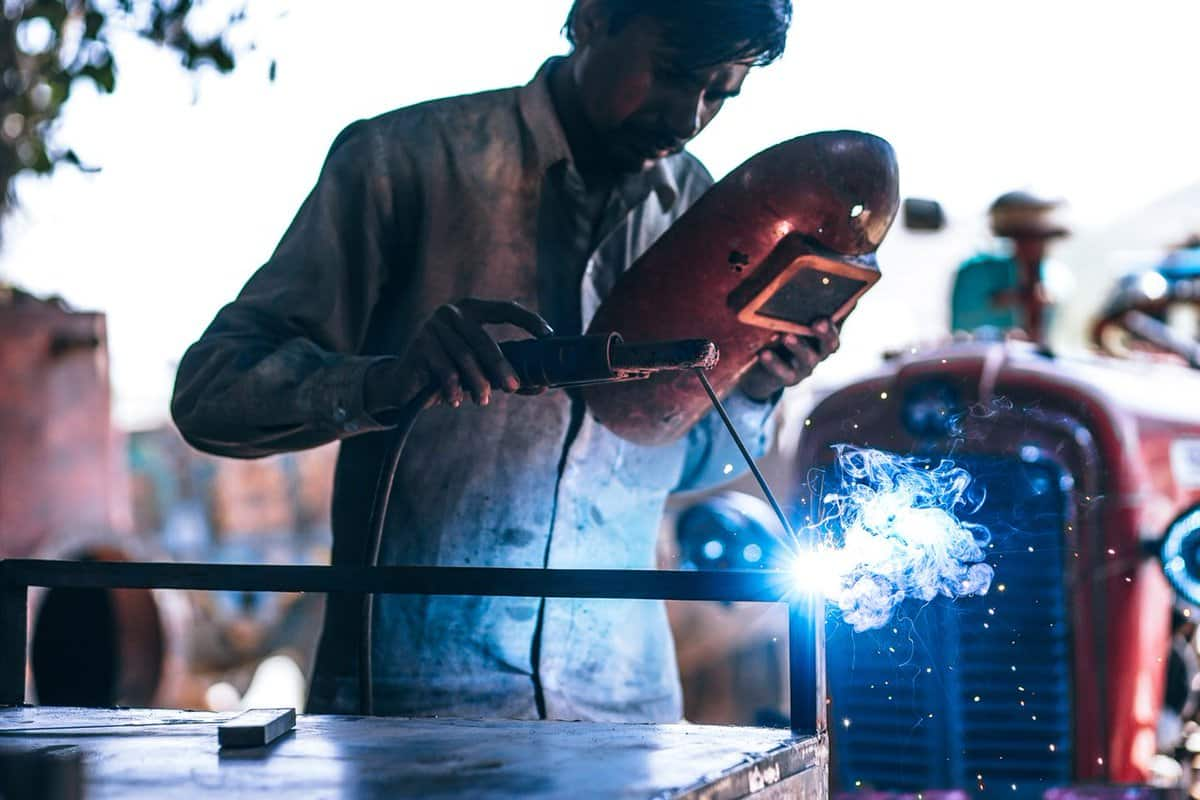 Types of gas welding: Oxyacetylene acetylene welding Acetylene welding, a mixture of acetylene gas and oxygen gas, is used to power a welding torch. These acetylene and oxygen gas mixtures provide the highest flame temperature of any oxygen fuel gas mixture. Oxy-gasoline welding If oxy-fuel welding is more effective than oxy-fuel welding in the gas cutting of steel sheets, gasoline can be used for a hand pump with a high-pressure cylinder. MAPP GAS WELDING MAPP, the full form of methyl acetylene propidine oil, is a gas mixture that is more inert than other gas mixtures. Since MAPP is more inert than other mixtures, it is safer than other mixtures. Because MAPP can also be used in the high-pressure form, it can be used for high-volume cutting operations. Butane/propane welding The flame temperature of butane and propane is lower than that of acetylene. Both of these gases are cheap and easy to transport. This type of welding is more commonly used for bending, soldering and heating. Propane welding requires a different type of torch tip than an injector tip because propane is a heavy gas. Hydrogen welding Hydrogen can also be used at a higher pressure than the other types of welding described above. Since hydrogen can be used under high pressure, it is used in underwater welding. Some hydrogen welders work by electrolysis, splitting the water used in the welding process into hydrogen and oxygen. It is also used to make jewelry.
Types of gas welding: Oxyacetylene acetylene welding Acetylene welding, a mixture of acetylene gas and oxygen gas, is used to power a welding torch. These acetylene and oxygen gas mixtures provide the highest flame temperature of any oxygen fuel gas mixture. Oxy-gasoline welding If oxy-fuel welding is more effective than oxy-fuel welding in the gas cutting of steel sheets, gasoline can be used for a hand pump with a high-pressure cylinder. MAPP GAS WELDING MAPP, the full form of methyl acetylene propidine oil, is a gas mixture that is more inert than other gas mixtures. Since MAPP is more inert than other mixtures, it is safer than other mixtures. Because MAPP can also be used in the high-pressure form, it can be used for high-volume cutting operations. Butane/propane welding The flame temperature of butane and propane is lower than that of acetylene. Both of these gases are cheap and easy to transport. This type of welding is more commonly used for bending, soldering and heating. Propane welding requires a different type of torch tip than an injector tip because propane is a heavy gas. Hydrogen welding Hydrogen can also be used at a higher pressure than the other types of welding described above. Since hydrogen can be used under high pressure, it is used in underwater welding. Some hydrogen welders work by electrolysis, splitting the water used in the welding process into hydrogen and oxygen. It is also used to make jewelry. 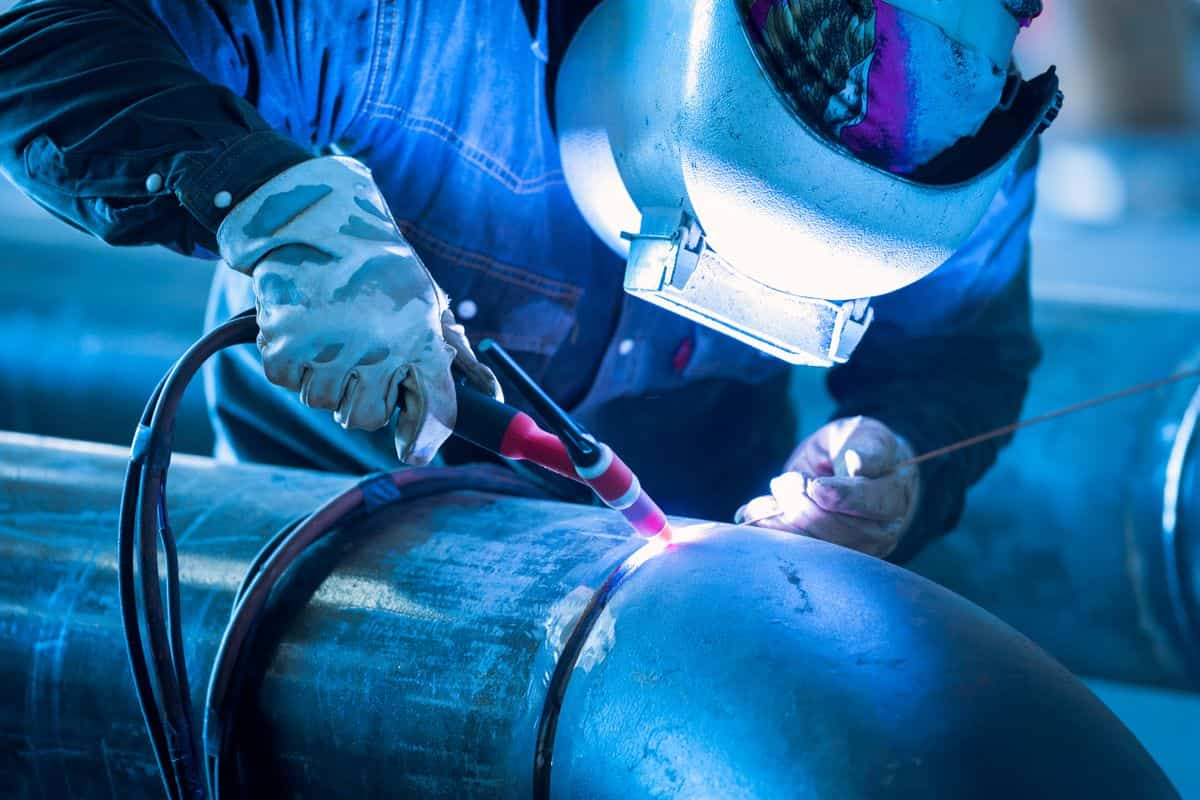 Here are the various benefits of gas welding:
Here are the various benefits of gas welding:
- It is easily portable.
- It is very cheap and very economical.
- It can be easily maintained and repaired.
- This is a simple tool.
- It is self-sufficient and does not depend on other equipment.
Here are the different applications of gas welding:
- It connects thin material.
- It is used for the connection of ferrous and non-ferrous metals.
- Gas welding is used in the production of sheet metal.
- Used in the aircraft industry.
Types of flame for gas welding:
- Natural flame or neutral flame
Most welding processes are performed with this flame. It is called a natural flame because no chemical reactions occur when welding with this flame. In addition, this flame produces very little smoke.
- Carburizing flame
This flame is called a carburizing flame because metal carbide is formed when welding with this flame. If a carbon-absorbing metal is welded with this flame, the properties of the metal change.
- Oxidizing flame
The amount of oxygen in this oxidized flame is greater than the volume fraction of combustible gases. He has two spheres and two cones; the first is called the inner cone and is colored white. The inner part is very bright, the other is called the outer cone and is blue.
